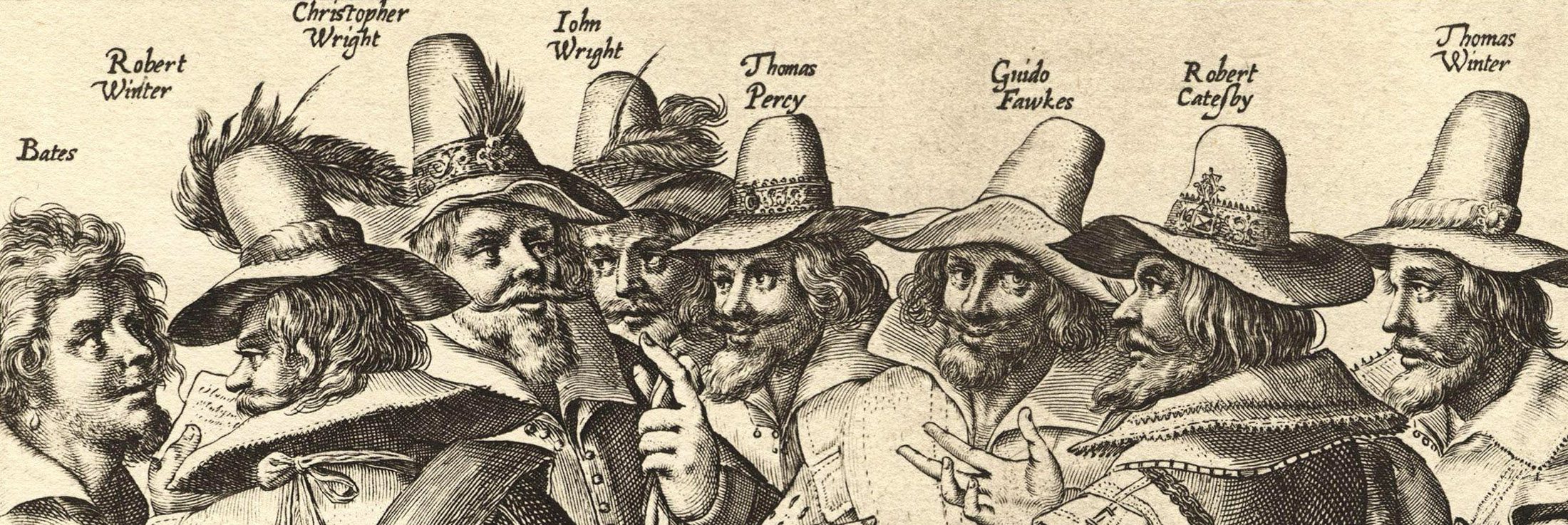
In the dead of night on 5th November 1605, in the shadowy cellars underneath the Houses of Parliament, a man was discovered carrying a lantern, wearing a cloak, and standing next to 36 barrels of gunpowder. The man’s name was Guy Fawkes. His plan? To kill the King.
Every year across Britain, people celebrate the capture of Guy Fawkes on 5th November. During Guy Fawkes Day (also known as Bonfire Night), fireworks are set off, bonfires are lit, and dummies of Fawkes are burned to commemorate the failure of the Gunpowder Plot.
Here are five great ways KS1 teachers can explore Guy Fawkes and the Gunpowder Plot with your classes, and create a lesson your pupils will remember, remember…
1. Experience the Plot in person
What better way to learn about the Gunpowder Plot than to witness it first-hand? Book a Tower of London tour for your class and see where Guy Fawkes was imprisoned after his arrest. Or, why not bring the story to you?
Our KS1 Guy Fawkes Experience transports pupils back in time to 1605, where they become the protagonist in a tale all about the treasonous Gunpowder Plot. Through sound, story, and movement, they will:
- Learn about the key characters
Pupils will meet Guy Fawkes himself, as well as Robert Catesby, Lord Monteagle, and King James I. - Live out the key events of the Gunpowder Plot
From plotting in the pub, to stashing gunpowder underneath Parliament, to delivering a crucial warning letter to the King, pupils will become a part of history as they learn it. - Discover the historical and religious context
Pupils will explore life in 1600s London and learn about the religious tensions and anti-Catholic discrimination that led to the Gunpowder Plot.
2. Present the facts
The story of the Gunpowder Plot is a complicated one. Religious oppression, political tensions, a man from York who called himself “Guido”… Especially when teaching younger children, you want to stick to the facts.
The UK Parliament website has a great PowerPoint presentation for primary schools, which introduces children to the story of Guy Fawkes and the Gunpowder Plot.
They also have an FAQs page, which can be of great help for whole-class discussions or research tasks.

3. Work together, or work independently
Begin your lesson with an enticing image, such as the one below. What do your pupils think is happening here? What can they see in the painting? Use this to prompt a group discussion about Bonfire Night, based on what your class already knows. Then, let your children research more about the story of Guy Fawkes on their own.
Alongside our exciting Guy Fawkes Experience, we have a number of tailored follow-on resources to help teachers embed learning. Use Recap, Discuss & Quiz, our unique resource for deeper learning, to guide engaging whole-class discussions centred on pupils’ experience of the Gunpowder Plot story.


4. Test their knowledge
Use this short BBC Bitesize quiz to test your class on their understanding of Guy Fawkes and his co-conspirators. Or, try our Recap, Discuss & Quiz resource, featuring questions on Fawkes, 1600s London life, and a Story Jumble sequencing activity.
Additionally, our Reading Comprehension resource gives pupils a literacy test directly linked to their experience of the Plot.
5. Link to other subjects
There are many fantastic resources to help embed your Gunpowder Plot learning outside of History lessons.
Teacher’s Pet offers plenty of simple Guy Fawkes-themed maths, reading, and writing activities, as well as colourful display elements for the classroom.
Students could also have a go at one of now>press>play’s Writing Opportunities, such as a newspaper report, adventure story, or acrostic poem, to boost their skills in Literacy lessons.

The Guy Fawkes Experience is just one of over 100 immersive, audio-based learning Experiences available through now>press>play. Explore our Experience Calendar to learn more about other key dates in the Autumn term.
We use now>press>play to provide our children with the chance to see and experience beyond our immediate community, a chance to experience the past and explore their own imagination and feelings.
Alexia Fox, Deputy Headteacher at St Theresa's Catholic Primary School


